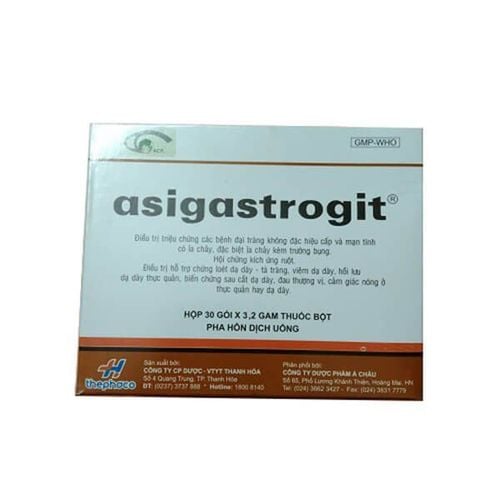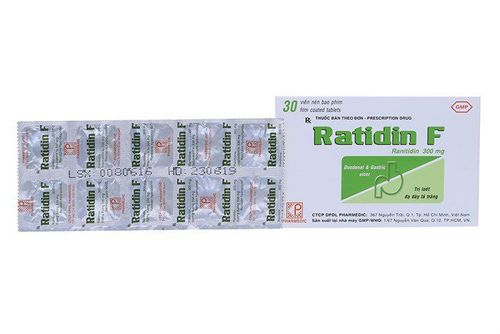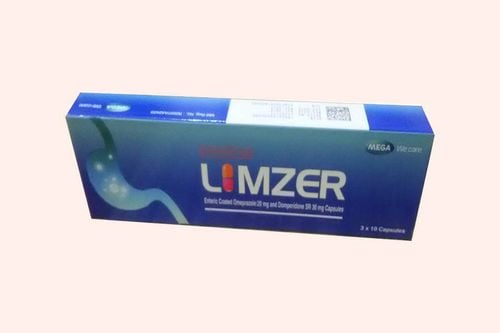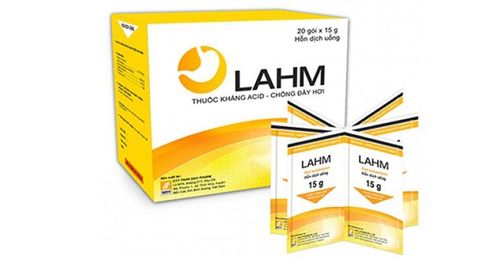This is an automatically translated article.
Esomeprazole belongs to a class of drugs called proton pump inhibitors. The effect of Esapbe is to treat many diseases related to stomach acid production, an important factor promoting gastric ulcer disease.1. What is Esapbe?
Esapbe drug contains the main ingredient Esomeprazole, which belongs to the class of proton pump inhibitors. Esapbe is used to treat certain stomach and esophageal problems (such as acid reflux, mucosal ulcers).
The mechanism of action of Esapbe, like other proton pump inhibitors, is by reducing the amount of acid in the stomach. Thereby, the drug relieves symptoms such as heartburn, difficulty swallowing and persistent cough. In addition, the drug Esapbe also helps to heal damage caused by acid in the stomach - esophagus, helping to prevent ulcers and prevent esophageal cancer in the long term.
2. Indications to use Esapbe
The effect of Esapbe 40mg is strongest when used for the purpose of recovery in disorders related to acid production and secretion. Medicine is usually the first indication for the following pathologies:
Esophagitis; Acid reflux disease; Peptic ulcer disease ; Prevention of peptic ulcers caused by non-steroidal anti-inflammatory drugs; Zollinger-Ellison syndrome ; Part of the treatment regimen for Helicobacter pylori infection. In addition, the drug effect Esapbe is also involved in the treatment of digestive diseases in pediatrics. Currently, these drugs have been approved by the FDA for the short-term treatment of symptomatic gastroesophageal reflux disease (GERD) and eosinophilic esophagitis in children.
Besides, in addition to the above uses, Esapbe has been used as an add-on therapy for patients on dual antiplatelet therapy or at high risk of bleeding, functional dyspepsia. function and eosinophilic esophagitis.
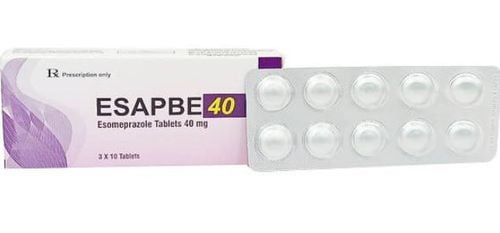
Thuốc Esapbe được sử dụng để điều trị một số vấn đề về dạ dày và thực quản
3. How to use Esapbe
Esapbe formulations are usually specifically designed to prevent premature activation by gastric acid such as enteric-coated tablets, gelatin capsules, white granules as suspension or in combination with bicarbonate to temporarily neutralize dissolve gastric acid. At the same time, for immediate acid suppression, Esapbe is also presented as an intravenous formulation.As proton pumps periodically recycle in the stomach, it can take several days for the drugs to reach their full effect and note, their duration of action is slower than that of some other drugs that affect production acids, such as histamine receptor blockers. Therefore, the way to use Esapbe is to take it before eating.
Most doctors recommend that patients take Esapbe in the morning. If a twice-daily dose is used, a second dose is usually added about 30 minutes before the evening meal. However, because some patients have symptoms of gastrointestinal hyperacidity that predominate at night, the daily dosing time may be changed to 30 minutes before the evening meal.
4. Dosage of Esapbe
4.1. Pediatric Dosage of Esapbe In the treatment of GERD:
1–11 years: 10 mg x 1 time / day for up to 8 weeks; ≥12–17 years: 20 mg x 1 time/day for 4 weeks; Erosive esophagitis in GERD:
Neonates (1 month to <1 year; use for up to 6 weeks): 3–5 kg: 2.5 mg once daily; > 5 to 7.5 kg: 5 mg x 1 time/day; > 7.5 to 12 kg: 10 mg x 1 time/day. 1–11 years (used for 8 weeks): <20 kg: 10 mg x 1 time/day; ≥20 kg: 10 or 20 mg x 1 time / day; 12–17 years: 20 or 40 mg once/day for 4–8 weeks. 4.2. Dosage of Esapbe for adults with GERD: 20 mg x 1 time / day; GERD with erosive esophagitis: 20 or 40 mg once/day × 4–8 weeks; Prevention of NSAID-induced gastric ulcers: 20 or 40 mg once daily for up to 6 months; Pathological hypersecretory states (eg, Zollinger-Ellison syndrome): 40 mg twice; doses up to 240 mg / 24; Hepatic impairment: Patients with severe hepatic impairment (Child-Pugh class C) should not take more than 20 mg/24 hours. If you forget to take a dose of Esapbe, take it as soon as you remember (unless it is almost time for your next dose, in which case, skip the missed dose). Do not take 2 doses together to make up for a missed dose.

Esapbe 40mg cần được dùng theo hướng dẫn của bác sĩ
5. Possible side effects when taking Esapbe
As the use of Esapbe becomes widespread, it is important to understand the extent of the adverse effects of the drug. Possible side effects with Esapbe have been reported:
Electrolyte disturbances : Although a rare side effect, the drug can deplete magnesium to levels that are not readily replenished from external sources. Hypokalemia is a serious complication that leaves the patient susceptible to tetanus, convulsions, muscle weakness, delirium, and cardiac arrhythmias. Infections: Long-term drug use is correlated with an increase in the number of infections caused by Clostridium difficile, other intestinal infections and potentially with an increased risk of community-acquired pneumonia. Reversible acid secretion reflex: The drug may increase gastrin levels, thereby leading to proliferation of histamine-producing cells, leading to parietal cell stimulation that activates H+/K+ ATPase and produces acid into the stomach . Vitamin deficiency: Vitamin B12 entering the stomach must be bound to a protein molecule. In order for vitamin B12 to be released from proteins, proteases need to be activated by an acidic environment. Disruption of the acidic environment of the stomach can lead to vitamin B12 deficiency, although this appears to be clinically rare. In addition, iron deficiency has also been reported with prolonged use of Esapbe, although the exact mechanism remains elusive.
In summary, Esapbe is used to treat symptoms of gastroesophageal reflux disease, prevent stomach ulcers caused by Helicobacter pylori infection, or use nonsteroidal anti-inflammatory drugs (NSAIDs). However, taking Esapbe can cause malabsorption of substances that require an acidic environment. Therefore, knowing the effects of Esapbe as well as the indications for use will help to use the drug reasonably and effectively.
Please dial HOTLINE for more information or register for an appointment HERE. Download MyVinmec app to make appointments faster and to manage your bookings easily.




